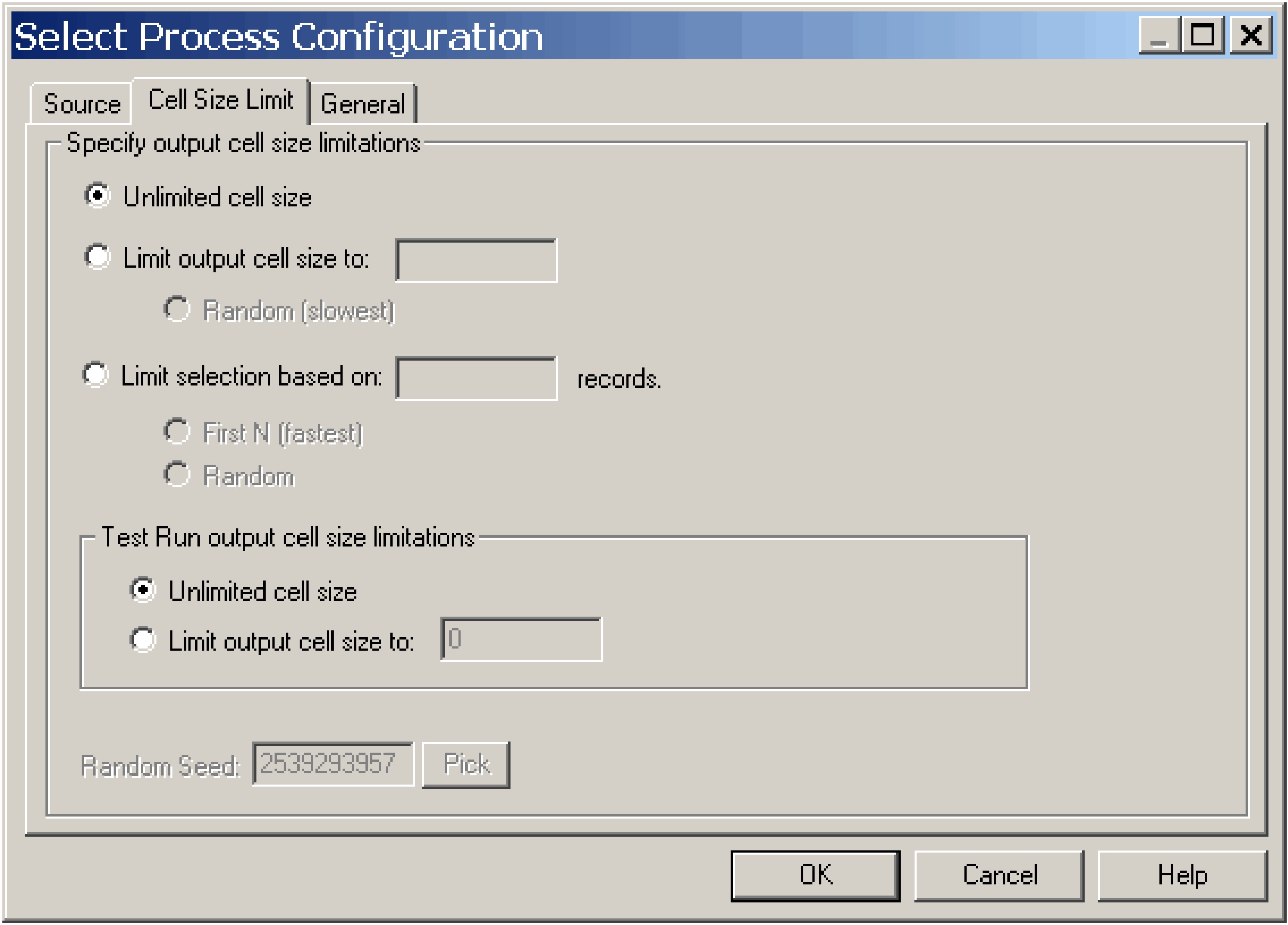
|
|
Unlimited cell size: Returns all IDs that meet the query or selection criteria on the tab of this process. This is the default option.
|
|
|
Limit output cell size to: Returns an exact specified number of unique IDs, selected randomly from all IDs that meet your query criteria. Enter the number of IDs that you want returned. Campaign deduplicates the complete set of IDs prior to random selection, then retains only the specified number of records, so that a list of unique IDs is returned even when duplicates exist on the ID fields.
|
|
|
Selecting records with this option uses a large amount of temporary space and takes the most time, because all IDs must be retrieved to the Campaign server. Use this option only when the data is not normalized on the ID field, and if it is important that exactly N records are returned.
|
|
|
Limit selection based on: Use these options to limit Campaign records that meet your query criteria. These options reduce the time and memory resources used in selecting the final set of records, but can result in fewer than your specified number of unique IDs.
|
|
|
First N (fastest): Campaign retrieves only the first records that meet your query criteria from the database. Campaign stops accepting records once the number of records has been received. Campaign then deduplicates these IDs; if the data has not been normalized, then your final result contains fewer than unique records. This is the fastest method because it takes less time to retrieve data and uses less temporary space.
|
|
|
Random: Campaign retrieves from the database all records that meet your query criteria, then selects number of records randomly from those records. Campaign then deduplicates these retained IDs; if the data has not been normalized, your final result contains fewer than unique records. This option uses less temporary space because only the randomly selected records are retrieved and stored by Campaign.
|
|
Copyright IBM Corporation 2013. All Rights Reserved.
|